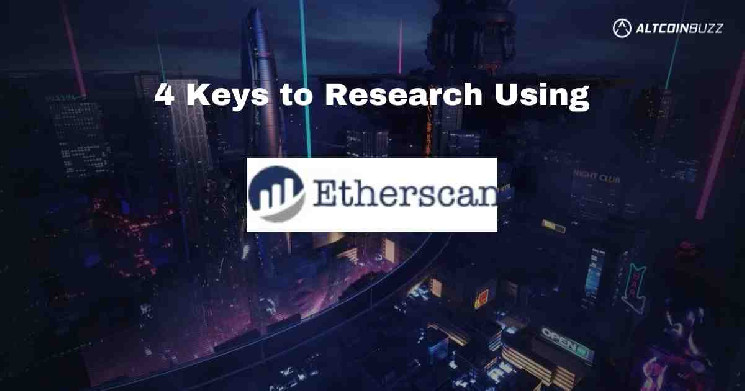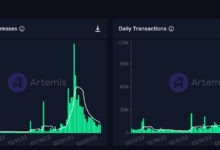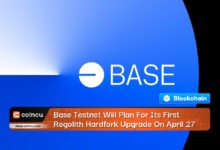4 Keys to Researching With Etherscan

In the world of blockchain, transparency is a must-have. Hence, every public blockchain (Bitcoin, Ethereum etc) built from the ground up is transparent. In other words, all transactions on such blockchains are verifiable through on-chain research. To access these on-chain data, you need to be adept at using blockchain explorers. Today, we go through 4 key methods to use blockchain explorers like Etherscan for research.
Understanding Blockchain Explorers
A blockchain explorer is an interface whereby you can view all transactions and interactions on a blockchain. Each blockchain usually has its own explorer. Below are some examples:
- Etherscan is the explorer for Ethereum.
- Solscan is the explorer for Solana.
- BSCScan is the explorer for Binance Smart Chain.
You can think of blockchain explorers as telescopes looking into the blockchain. They provide clarity to on-chain data for public users. However, you do need to know:
- How to use blockchain explorers.
- How to interpret the explorer interface and data presented.
Today, we shall go through the basics of using Etherscan. As Ethereum is one of the most used blockchains, Etherscan has become the most used blockchain explorer. Hence, it is the best place to start for learning the basics of using an explorer.
You can access Etherscan using the link here. Note: For security reasons, always check that the URL for Etherscan is etherscan.io.
Key #1 – Exploring an Address
The first thing you need to learn on Etherscan is to explore an address. Every wallet has its own on-chain address. The below tweet shows you where you can input the address you wish to explore.
1. Exploring an Address
Found an interesting wallet and want to know which tokens it’s holding and where it’s inter2acting? pic.twitter.com/inmcb93Anf
— The Crypto Illuminati (@0x_illuminati) June 19, 2022
By entering the address into Etherscan, you can view the:
- Transaction Hash or ID – This is the transaction’s identifier.
- Transaction Method – For example, “transfer”, “mint”, “approve”, “deposit”, “stake” and “compound”.
- Administrative Data – For example, block number and time stamp.
- Sender and Recipient info.
- Transaction Values and Gas fees paid.
The tweet below provides a great interface to show where these data are found on the Etherscan interface.
• Block Number: The block number in which your transaction was included.
• Time Stamp
• Token (Transferred From): The address from which the token was transferred.
— The Crypto Illuminati (@0x_illuminati) June 19, 2022
Knowing how to explore an address is a great skill. With it, you can check on-chain if a transaction you initiated is successful. Also, you could snoop around your friend’s address to find out if he is a whale or not.

Source: https://unsplash.com/ – Watching your whale friend’s wallet on Etherscan
Key #2 – Exploring a Token
Many tokens are built on the Ethereum blockchain. Such tokens are known as ERC-20 tokens. Hence, they are also trackable on Etherscan. The tweet below details 3 methods to access Etherscan’s token tracker.
Alternatively, you can go to https://t.co/guTROPeT3d] or search for the token name in @etherscan search. pic.twitter.com/OvEw7dNdG6
— The Crypto Illuminati (@0x_illuminati) June 19, 2022
Personally, my preferred method would be to go to Coingecko first. This ensures that the token address matches the token that I’m looking for. Do note that there are many fake tokens with similar names to legit tokens. Hence, it is always wise to copy the token address through Coingecko.
Then, I would copy the contract over to Etherscan. Lastly, I would click on the token tracker link. The below tweet shows some basic information found on the token tracker page.
• Transfers show you recent token transactions, similar to exploring a wallet address. pic.twitter.com/oHO1W6cE0k
— The Crypto Illuminati (@0x_illuminati) June 19, 2022
One key piece of information I would always want to check would be the top token holders. This can help me to determine if the token could be a good investment. Firstly, I would take note if a token has a large percentage of unlocked tokens held in unknown wallets. These could represent selling pressure when such “whale” wallets decide to dump. Secondly, I can view the token’s distribution among different locations. This helps me to have an overview of where the supply of the tokens are, and if they’re being put to good use.
The below tweet shows the interface from which you can find the top token holders.
For example, we can see that this address «Binance 14» is holding ~1% of USDC supply ($500M).
And given that all transaction are from «Binance 14» to [other address], this is likely a Binance Address used for withdrawals.
(https://t.co/qMSNr3EVlg) pic.twitter.com/6FLkqSeGAS
— The Crypto Illuminati (@0x_illuminati) June 19, 2022
In addition, there are other tabs that could be useful. These include the “Dex Trades”, “Contract” and “Analytics” tab. On the “Contract” tab, you could interact directly with the smart contract on Etherscan. The next section will illustrate how.
Key #3 – Interacting with an Etherscan Contract
Using Etherscan, you could also opt to interact directly with a smart contract. This can be done without using the decentralized application (dApp). You could do this when the dApp isn’t working properly or when you want to test your contracts. Below tweets illustrate 2 common ways to interact with a smart contract through Etherscan.
Most fungible tokens on the Ethereum chain are ERC20 standard, and NFTs are ERC721 or ERC1155.
You can find more about these token standards here to understand what their functions do:
ERC20: https://t.co/Z497Z3O5WP
ERC721: https://t.co/Z2uHlReEUf.
— The Crypto Illuminati (@0x_illuminati) June 19, 2022
To use Write Contract you have to connect your web3 wallet.
This is because you are making changes to the state of the smart contract.
Here’s an article showing you how:https://t.co/nmezSESc01
— The Crypto Illuminati (@0x_illuminati) June 19, 2022
However, interacting with smart contracts through Etherscan is meant for users adept at Solidity. Due to the technical nature of this topic, we won’t go into depth in this article. Solidity is ETH’s smart contract language.
Key #4 – Etherscan Gas Tracker
Another handy tool that Etherscan provides is a gas tracker. This allows you to gauge the gas fees required to use the Ethereum blockchain. It also allows you to check for trends to identify days and times whereby gas is the cheapest. The tweet below shows the interface to identify these trends. Frankly, this is a great tool for you if you’re looking to save more ETH by spending less on gas.
Etherscan historical gas tracker is pretty useful to see trends and find the best times with cheaper gas. pic.twitter.com/pSkVnIzJgT
— The Crypto Illuminati (@0x_illuminati) June 19, 2022
Conclusion
So, that concludes our coverage of 4 keys to researching on Etherscan. With these skills at hand, you would already have a better edge compared to general crypto retail investors. However, this is just the tip of the iceberg for a successful crypto investor. If you would like to delve deeper into on-chain analysis, the article here could definitely help you.






 Bitcoin
Bitcoin  Ethereum
Ethereum  Tether
Tether  USDC
USDC  TRON
TRON  Dogecoin
Dogecoin  Cardano
Cardano  Bitcoin Cash
Bitcoin Cash  Chainlink
Chainlink  LEO Token
LEO Token  Stellar
Stellar  Zcash
Zcash  Monero
Monero  Litecoin
Litecoin  Hedera
Hedera  Dai
Dai  Cronos
Cronos  OKB
OKB  Tether Gold
Tether Gold  Ethereum Classic
Ethereum Classic  KuCoin
KuCoin  Gate
Gate  Algorand
Algorand  Cosmos Hub
Cosmos Hub  VeChain
VeChain  Dash
Dash  Stacks
Stacks  Tezos
Tezos  TrueUSD
TrueUSD  IOTA
IOTA  Basic Attention
Basic Attention  Decred
Decred  Theta Network
Theta Network  NEO
NEO  Synthetix
Synthetix  Qtum
Qtum  Ravencoin
Ravencoin  0x Protocol
0x Protocol  DigiByte
DigiByte  Zilliqa
Zilliqa  Nano
Nano  Siacoin
Siacoin  Numeraire
Numeraire  Waves
Waves  Enjin Coin
Enjin Coin  Ontology
Ontology  Status
Status  Pax Dollar
Pax Dollar  BUSD
BUSD  Hive
Hive  Lisk
Lisk  Steem
Steem  Huobi
Huobi  NEM
NEM  OMG Network
OMG Network  Augur
Augur  Bitcoin Gold
Bitcoin Gold  Ren
Ren